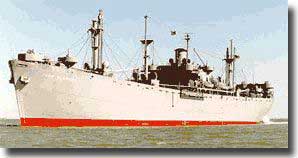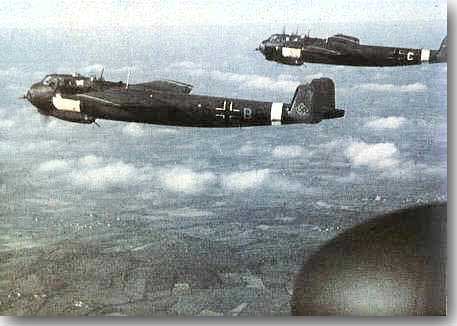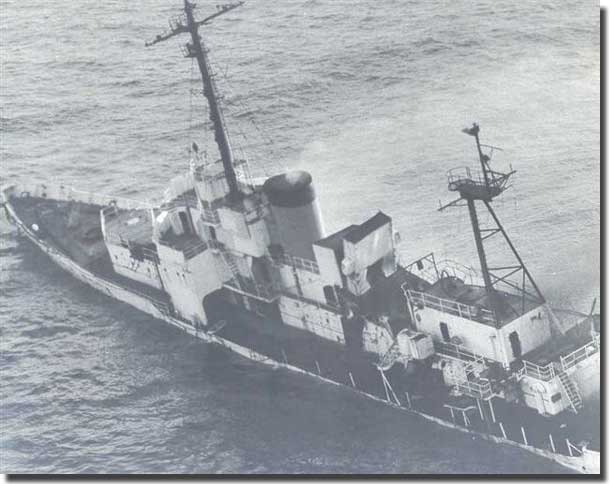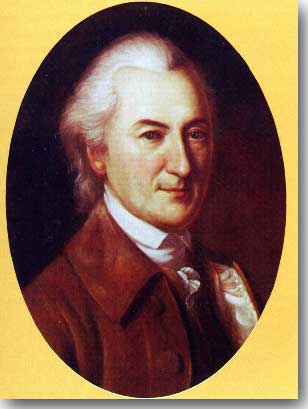|
Convoy UGS-40, under extreme enemy air attack. May 11th. 1944
Introduction. Convoy UGS-40 had sailed from Norfolk Virginia, on the 22nd. of April in 1944, by the 11th. of May it was shaping a course for Bizerta in Tunisia, to be the target of the most intensive air attack on any convoy in this arena over the second half of WW2. Task Force 61 and Convoy UGS-40. All the Merchant ships are not listed below, as perhaps 10 of those that sailed are unknown, it does seem that the composition of UGS-40 did change between its start and final arrival. A large naval escort named as Task force 61 consisted of 18 ships, if we include those ships that joined after the Atlantic crossing was successfully negotiated. TF 61 was commanded by Commander Jesse Sowell in USCGC Campbell.
The "Treasury" class Coast Guard cutters (sometimes referred to as the "Secretary" or 327-foot class) were all named for former secretaries of the Treasury Department. The cutter Campbell was named for George Washington Campbell, a native of Scotland, who served as a Secretary of the Treasury under President James Madison. He was born in 1769 and moved with his family to North Carolina in 1772. Campbell graduated from Princeton in 1794 and won election to Congress in 1802. He remained in Congress until 1809, serving as the chairman of the Ways and Means Committee during his last term. He was chosen as a senator for Tennessee in 1811, but resigned in 1814 upon being appointed as the Secretary of the Treasury in 1814 by President James Madison. He was the first cabinet member from a region west of the Appalachian Mountains. Campbell resigned after only eight months in office due to problems with raising finances for the war effort during the War of 1812, particularly after the British burned Washington. He returned to the Senate in 1815 and served until April 1818, when he was appointed Minister to Russia. He returned to the United States in July, 1820, and in 1831 was a member of the French Claims Commission. He died in Nashville, Tennessee, on 17 February 1848. Escort TF-61. The British AA Cruiser, HMS Caledon. US Destroyers, Benson, Bernadou, Dallas, Ellis11. US Destroyer Escorts, Decker, Dobler, Evarts, Smartt, Walter S. Brown, Wilhoite, Wyfells. US Minesweepers, Steady, Sustain. The British Fleet Tug HMT Hengist. The French Ships, FNS Cimeterre, FNS Tunisien. Merchant Ships in Convoy. US, United States of America, BR, British, CAN, Canada, DUT, Netherlands, and NOR, Norwegian. Their listing is in no particular order.
German bombers were a serious threat to allied shipping in the Mediterranean from the new year of 1944, because about 100 modern bombers were stationed in the South of France, their primary goal being the large UGS convoys from U.S.A., carrying supplies to the allied forces in Italy. Fernbrook was in Convoy UGS 40 (station 54), consisting of 77 ships ("Nortraships flåte" says 65 ships), 17 escort vessels as well as the British cruiser Caledon. The convoy was attacked by a total of 62 aircraft off Cape Bengut on the evening of May 11-1944. The attack lasted for 40 minutes, no ships were hit, 19 planes crashed in the sea, giving a convincing example of how important and useful it was to have decent armament on the merchant ships. According to a gunner's report from Fernbrook, 1 aircraft fell in the water on her port side between ship No. 34 and 35, and another came down in flames near No. 74 and 75. Roy W. Brown, US Armed Guard Signalman. Note. I am most indebted to Roy W. Brown for his lucid account of this action.
Gibraltar. Enemy aircraft arrive.
The aircraft approached from the convoy's port bow, and the escorts laid down a large barrage against them. 62 JU 88's, Dornier 217's, Heinkel 111's and a lone FW Kondor to guide radio controlled bombs, were covered by a swag of fighters, as the formation moved in to attack.
British Beaufort night fighters intercepted to shoot down two enemy aircraft and lose two of their own. An incredible 92 torpedoes and a host of bombs were released against the Allied force. Reports of this onslought state that 17 enemy aircraft were shot down, and Roy believes that figure could have reached 22, plus other enemy aircraft damaged. Not withstanding this heavy attack, plus glide bombs from the FW Kondor being released, not a single ship of the escort, or convoy of Merchant ships was hit, but there were many near misses.
It is hair raising to be bombed and face concerted torpedo attacks, in my 6 years of war at sea, I had faced both these problems from Japanese aircraft attacks on my ships in the Pacific, you watch the Torpedo bombers move in, drop their deadly torpedoes, then wait to observe their wakes as they move towards your ship. Now you wonder if your Captain will order a helm alteration in time to alter course that will take your cruiser out of Harm's Way. It is a very nerve racking experience, so I am well able to relive Roy's agony, and that of all those in UGS 40. Both the Convoy Commodore, and Commander Sewell thought some of their charges were hit, but fortunately, not so. The Escort Commander in his report noted: " We had been living right, and GOD was on our side." Roy was not so sure about that comment, but considered it quite a miracle that all ships had escaped with just slight damage to some ships, and a few crew members wounded. He added, " How nice of Herman Goering to celebrate my forth coming 18th. birthday in such a manner." This attack was described as the hottest contested convoy action in the second half of WW2. It was natural for German Radio to make claims that their aircraft had sunk several Merchant Ships, some of the Escorts and damaged others, but patently untrue. Conclusion.
After Campbell had been decommissioned, she was turned over to the US Navy for use as a target. The Navy's Naval Air Warfare Command sank her on 30 November 1984 off Guadaloupe Island with a Harpoon missile during a fleet readiness exercise. The old warrior transmitted a final radio message as she slid beneath the waves:
|








